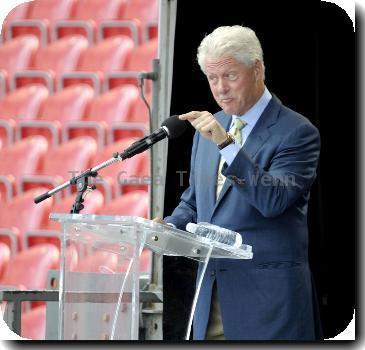William P. Foster, innovative founder of Florida A&M Marching 100 band, dies at 91
By APSaturday, August 28, 2010
Founder of Florida A&M Marching 100 dies at 91
TALLAHASSEE, Fla. — William P. Foster, credited with innovating a much-imitated high-stepping style as founder and longtime director of the Florida A&M Marching 100 band, died Saturday. He was 91.
Foster died in Tallahassee, university officials said. They did not release a cause of death.
Foster served as the marching band’s director from 1946 until his retirement in 1998. He created more than 200 halftime pageants for the band at the historically black university.
He is credited with innovating marching band techniques, including a high-stepping style imitated by high school and college bands nationwide.
“He revolutionized marching band techniques in America,” said Julian E. White, a former student of Foster’s and the school’s current band director and music department chairman. “The most exciting response you can get from an audience is their reaction to well choreographed dance routine steps. That’s the kind of thing that Dr. Foster introduced.”
A 1991 article in USA Today called the Marching 100 “probably the best known college marching band in the USA,” and a 1989 New York Times piece called them “perhaps the most imitated of marching bands.”
“There’s a psychology to running a band,” Foster told The New York Times in 1989. “People want to hear the songs they hear on the radio; it gives them an immediate relationship with you. And then there’s the energy. Lots of energy in playing and marching. Dazzle them with it. Energy.”
In 1989, the French chose the Marching 100 to represent the United States in the Bastille Day Parade in Paris, celebrating the 200th anniversary of the French Revolution. Instead of traditional marching band music, the band played and danced to songs by James Brown.
“They illustrate American music to me, which is to say the best of black music,” the parade’s artistic director, Jean-Paul Goude, told The New York Times. “Some things have never been exposed to the Parisian people, and this is more exciting than some pop star seen on MTV.”
Over the years, members of the Marching 100 have played at Super Bowls, the Olympics, the Grammy Awards and the inaugurations of Presidents Bill Clinton and Barack Obama.
The Marching 100 won the Sudler Intercollegiate Marching Band Trophy in 1985 and in 1992, Sports Illustrated declared them the best marching band in the country.
The band has grown to more than 400 members, who wear green and orange uniforms. Many go on to careers as band directors and professional performers. One of the best-known was jazz saxophonist Julian “Cannonball” Adderley.
“As a visionary leader, (Foster) built America’s greatest band by departing from the standard routines and maneuvers to showcase band pageantry,” said FAMU President James H. Ammons.
White, who spent 25 years as an assistant band director before succeeding Foster, said his mentor taught students problem-solving, discipline and perseverance.
“I’ve heard doctors, lawyers and professors say that Dr. Foster instilled those leadership qualities in them, and it caused them to be successful,” White said.
Foster graduated from the University of Kansas in 1941, earned his masters degree from Wayne State University in 1950 and received his doctorate from Teachers College at Columbia University in 1955.
He wrote two books, “Band Pageantry: A Guide for the Marching Band” and “The Man Behind the Baton.”
Foster was born in Kansas City, Kansas, on Aug. 25, 1919. He began his music career by learning to play the clarinet at age 12.

